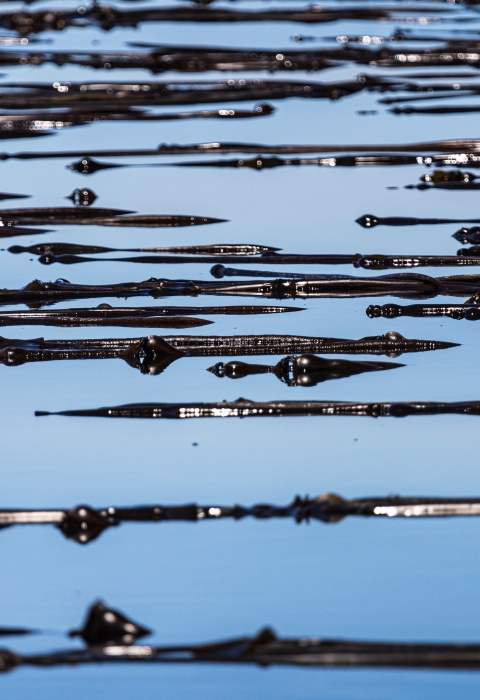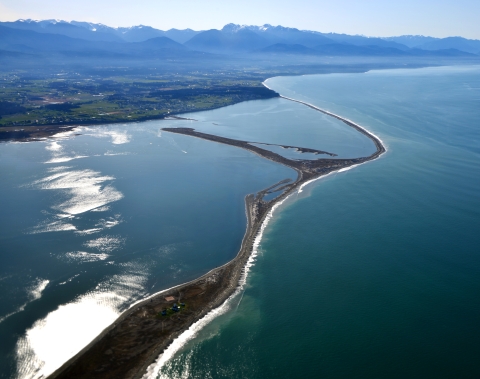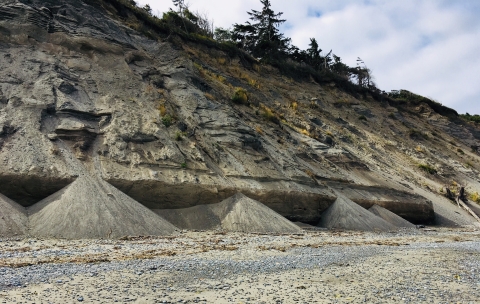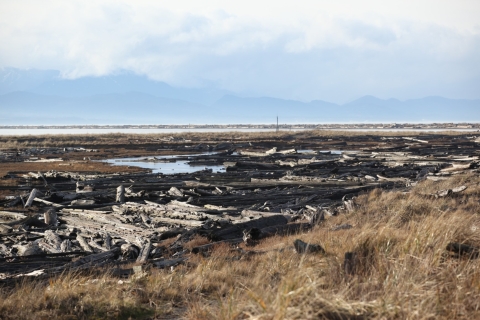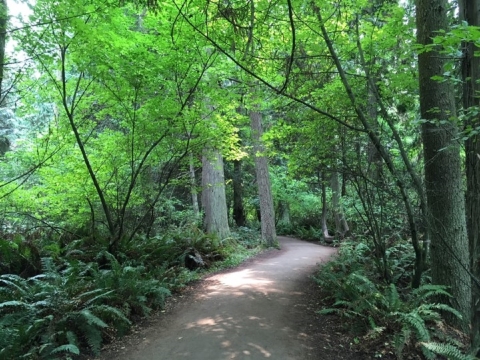From the silty depths of the mudflats to dizzying heights of a Douglas fir, the habitats of Dungeness are a fertile mosaic for wildlife.
Sandy Bluffs
Sandy bluffs tower to the west of Dungeness Spit. The power of erosion through wind, rain, and waves sloughs glacial sand and gravel from these bluffs into the Strait. Longshore currents carry the sediments east along the Spit, continuously feeding it and creating fresh habitat for its residents. Without the miles of bluffs stretching back towards Port Angeles there would be no Dungeness Spit.
Barrier Beach
Dungeness National Wildlife Refuge is perhaps best known for its expansive sand spit or barrier beach. This low sand, gravel, and cobble beach is reinforced by a driftwood "spine". The constant source of sediment from the bluffs continually changes the nature of the beach. Often what is a cobble beach in the winter becomes a sand or gravel beach in the summer. This steady influx of sediment means the Spit grows lengthwise at the rate of approximately 15 feet per year.
Barrier Lagoons and Mudflats
Lagoons and mudflats form in the protected recesses of the Spit where fresh water is scarce. Because of the ebb and flow of saltwater tides vegetation is scant, leaving algae and invertebrates such as mollusks and marine worms to populate the silty layers. As a result, the mudflats are a popular spot for ducks and shorebirds to forage for food.
Eelgrass Beds
Eelgrass beds grow in Dungeness Harbor and Bay where the water salinity, temperature, and depth create the perfect environment for this pondweed to thrive. Just like many other plants it blooms in the spring, releases seeds in the summer, goes dormant in the winter, only to start over with seed germination the following spring. Unlike most plants, common eelgrass completes this whole cycle under water.
Salt Marsh
In sheltered nooks of the Spit, where both fresh and salt water are available, salt marshes form. A few hardy plants such as seaside plantain and American glasswort survive here. The decay that results provides an important source of nutrients for all the surrounding habitats when it is flushed from the marshes by storms and tides. Additionally, the salt marshes provide a vital buffer to the environment by filtering harmful pollutants.
Forest
Compared to forests on the western side of the Olympic Peninsula, the forest at Dungeness is quite dry, receiving on average fourteen inches of rain per year. Nonetheless a lush forest; dominated by Douglas fir and western hemlock and punctuated by western redcedar, Pacific madrone, and red alder; thrives here. The thick understory shelters salal, sword fern, and oceanspray.
